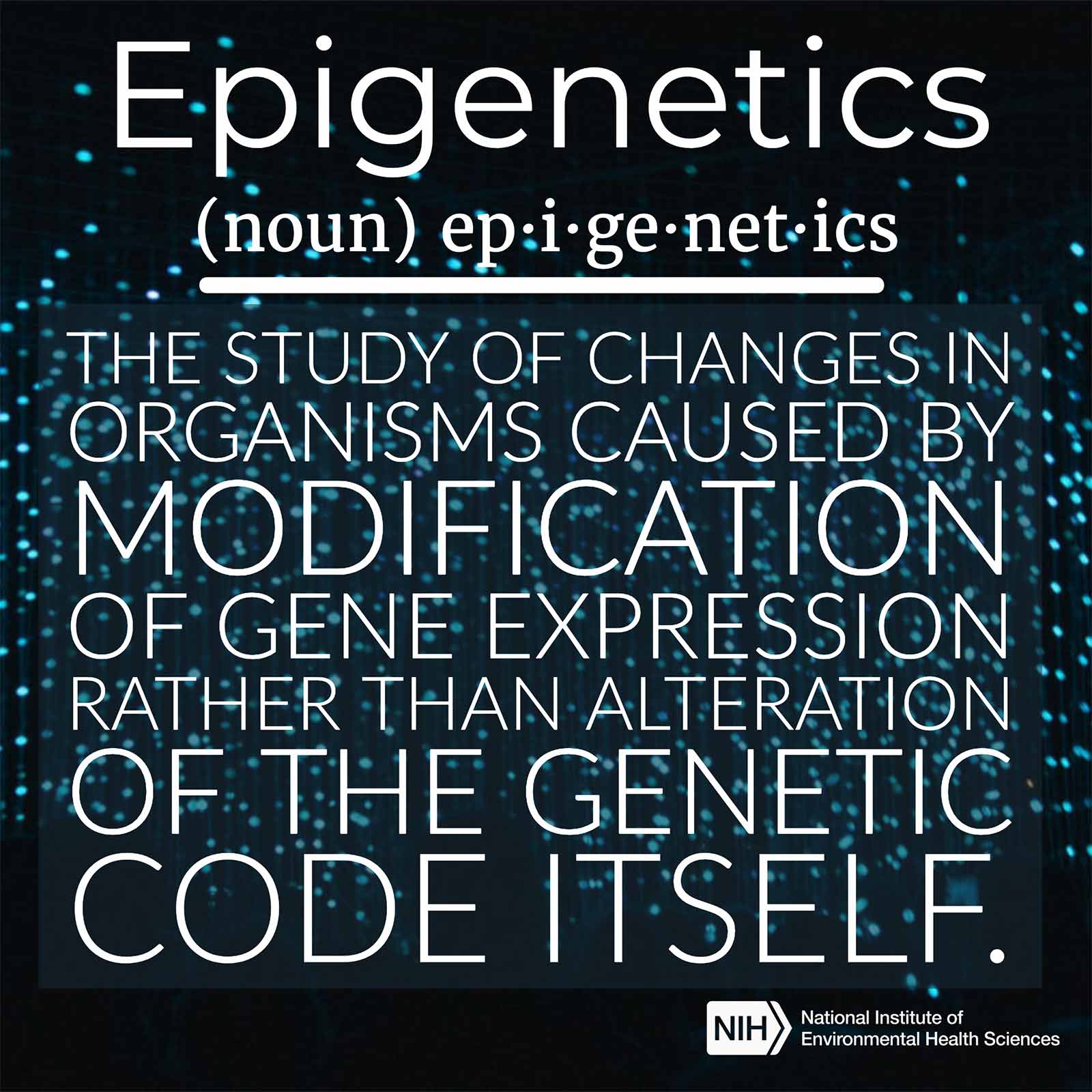An ambitious effort to learn how exposure to harmful agents and infectious diseases can affect the human epigenome could strengthen American national security, public health, and medical diagnostics, according to Eric Van Gieson, Ph.D.
He is a program manager in the Defense Advanced Research Projects Agency (DARPA) Biological Technologies Office, which is part of the U.S. Department of Defense. Van Gieson gave the NIEHS Keystone Science Lecture Sept. 18. Fred Tyson, Ph.D., a program director in the institute’s Genes, Environment, and Health Branch, hosted the online event.
 Studying the interplay between environmental exposures and genetics could improve human health outcomes and lead to advances in precision medicine.
Studying the interplay between environmental exposures and genetics could improve human health outcomes and lead to advances in precision medicine.The epigenome is shorthand for all of the changes to gene expression that can occur throughout an individual’s life without affecting his or her genetic code. Such epigenetic modifications can result from a variety of factors, including pollution, stress, disease, and aging.
Pinpointing exposure to WMDs
In 2018, Van Gieson’s team developed the Epigenetic Characterization and Observation (ECHO) program to rapidly assess whether an individual has been exposed to infectious disease, weapons of mass destruction precursors, or other harmful agents. The goal is to create a point-of-care device that can analyze a person’s unique epigenetic fingerprint on the spot, delivering results within 30 minutes or less (see sidebar).
 Van Gieson noted that ECHO is a collaborative effort involving researchers from academia, industry, and the National Institutes of Health. (Photo courtesy of DARPA)
Van Gieson noted that ECHO is a collaborative effort involving researchers from academia, industry, and the National Institutes of Health. (Photo courtesy of DARPA)“We are excited about ECHO,” said Van Gieson. “We are extremely interested in the diagnostic insights that the epigenome provides. I liken it to an aircraft’s black box recording system that we can exploit to tell us when and what we’ve been exposed to.”
Beyond national security
He said that beyond strengthening national security, the project could enhance disease surveillance, epidemiology, and environmental health science research.
Academic scientists participate in the program, helping to analyze large amounts of human health data related to environmental exposures and disease, according to Van Gieson. A major aim is to identify epigenetic signatures that can serve as biomarkers — biological indicators of a disease state or previous exposure — and better inform medical interventions.
“The goal here is to build new approaches that take advantage of the entire breadth of the epigenome, rather than focusing on a single part of it,” he said.
Pesticide exposure and staph infections
Through ECHO, researchers developed epigenetic signatures that can identify exposure to the pesticide chlorpyrifos in a patient’s blood sample long after the exposure and traces of the chemical have gone. Prenatal exposure to that substance is associated with harm to brain development and structure. The signatures also can shed light on whether genes associated with neurodegenerative diseases have been triggered.
ECHO scientists are also tackling hospital-acquired staph infections. Usually, determining whether a patient has an antibiotic-resistant staph infection is a multiday process. To speed up that process, the researchers identified signatures that can indicate such antibiotic resistance. This could lead to a rapid test, implemented in under an hour, that results in more responsive medical treatment. Scientists in the program also are developing signatures for the human immunodeficiency virus, or HIV, and 10 other exposures.
COVID-19 and the military
This year, ECHO researchers pivoted to COVID-19, particularly as it relates to military personnel. The scientists sought to address the problems of determining when to place individuals in and out of quarantine, and identifying asymptomatic infected recruits.
They collaborated with the U.S. Navy Medical Research Center on the COVID-19 Health Action Response for Marines study, which includes approximately 3,600 enrollees and 42,000 samples. According to Van Gieson, this is the largest military longitudinal COVID-19 public health study to date.
 Tyson is the program lead on NIEHS-funded projects related to epitranscriptomics. (Photo courtesy of Steve McCaw)
Tyson is the program lead on NIEHS-funded projects related to epitranscriptomics. (Photo courtesy of Steve McCaw)So far, the researchers have identified unique biological differences between asymptomatic infected individuals and symptomatic individuals. They are identifying epigenetic signatures for the development of testing kits that can rapidly produce accurate results.
Fostering collaboration
Van Gieson thanked Tyson for providing advice during the planning stages of ECHO. “Dr. Tyson and his team talked to us and shared lessons learned, which really helped to shape this program,” he said. “We couldn’t have done it without you, so thank you for your generosity, and I look forward to continuing working with you.”
“The ECHO program led by Dr. Van Gieson has made remarkable progress in developing exposure-induced epigenomic signatures,” said Tyson. “We enthusiastically anticipate exploring opportunities that leverage resources from this program with the NIEHS TaRGET [Toxicant Exposures and Responses by Genomic and Epigenomic Regulators of Transcription] Program.”










